New analysis from Glassnode shows that Bitcoin's traditional 4-year cycle remains structurally intact despite many analysts claiming that institutional adoption has disrupted this model.
The blockchain analytics firm noted that the current cycle duration of Bitcoin and the profit-taking levels of long-term holders closely resemble previous cycles, with all-time highs in both the 2015-2018 and 2018-2022 cycles occurring 2-3 months after the current timeline.
Glassnode Data Challenges the Narrative of the "Death of the Cycle"
This analysis is in complete contrast to recent statements from industry figures, including CryptoQuant CEO Ki Young Ju, who claimed that "this cycle is dead" and Bitwise Chief Information Officer Matt Hougan, who argued that the diminishing impact of the halving and the influx of institutional capital has replaced traditional models.
However, Glassnode data indicates that the current cycle has reached the second-longest recorded time for Bitcoin's supply remaining above profitable levels.
The capital inflow into Bitcoin has significantly weakened despite reaching a new record high of $124,400, with real market cap growth only achieving 6% per month compared to 13% during the first breakout to $100,000 at the end of 2024.
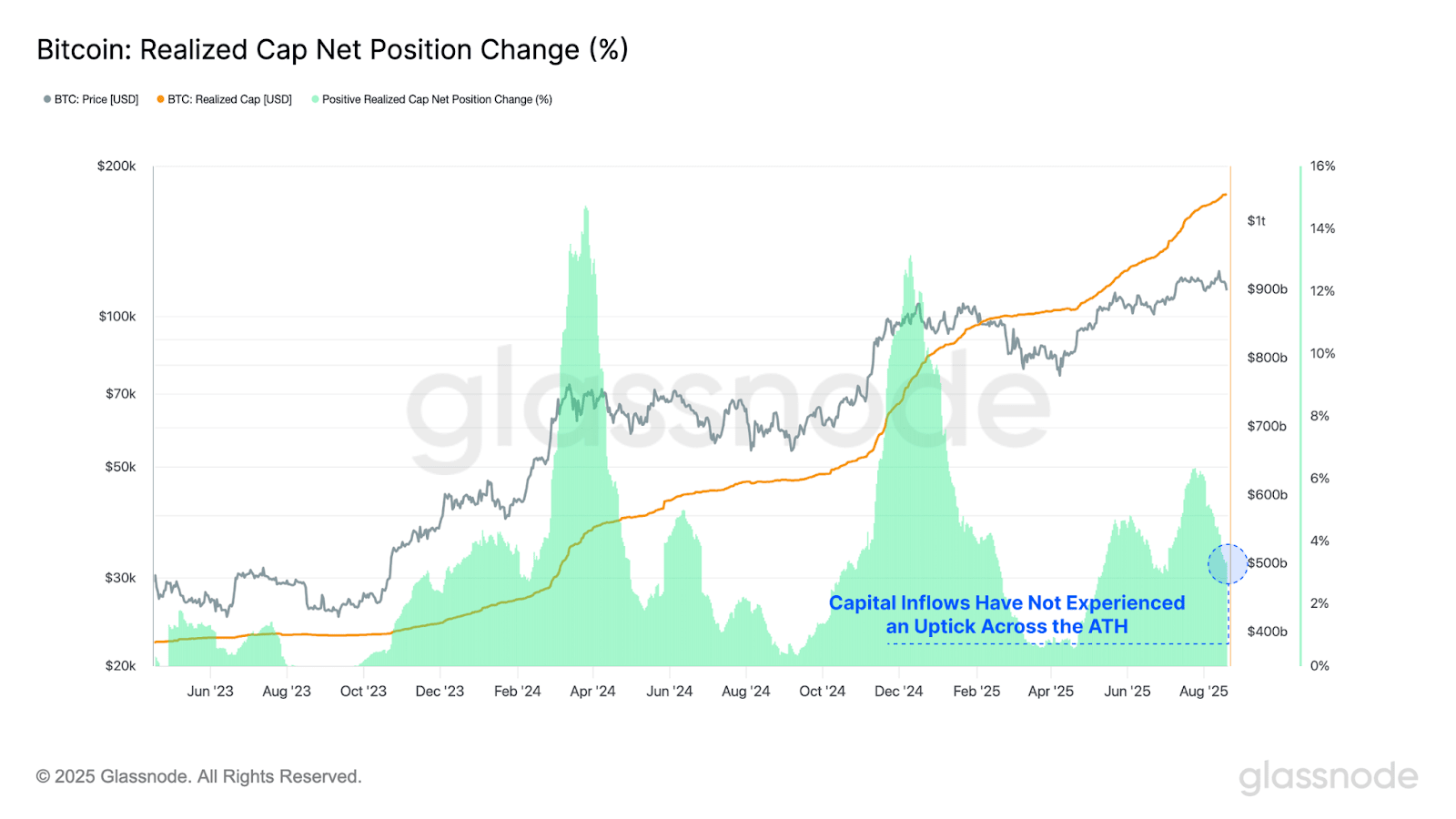
Meanwhile, institutional adoption continues to accelerate, with the giant construction group Ming Shing Group from Hong Kong recently announcing plans to purchase 4,250 Bitcoin worth $483 million.
The company joins a group of 297 public institutions currently holding a total of over 3.67 million BTC, reigniting the ongoing debate about whether corporate accumulation fundamentally changes the cycle nature of Bitcoin.
Leverage And Speculation Signal End Cycle Momentum
The derivatives market continues to display a high-risk appetite, characteristic of a mature growth phase, with open Bitcoin futures contracts remaining at $67 billion despite recent corrections.
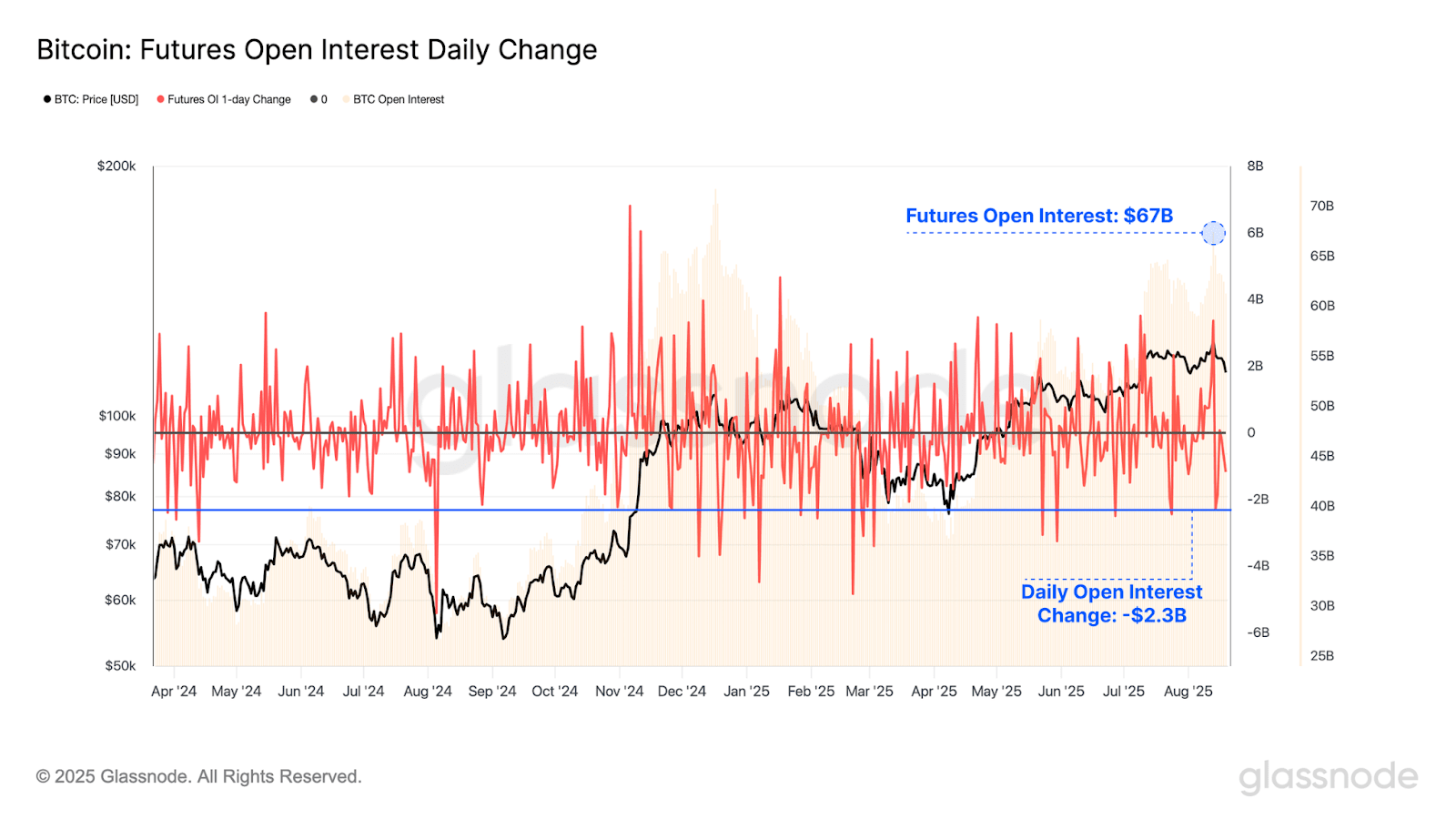
The $2.3 billion sell-off in open contracts during the latest sell-off ranks among the largest 23 trading days recorded, highlighting speculative positioning vulnerabilities.
Notably, altcoin leverage also reached a new peak as the total open contracts across major cryptocurrencies surged to a record $60.2 billion before dropping by $2.6 billion during the price correction. This is the 10th largest drop in the history of altcoin derivative products.
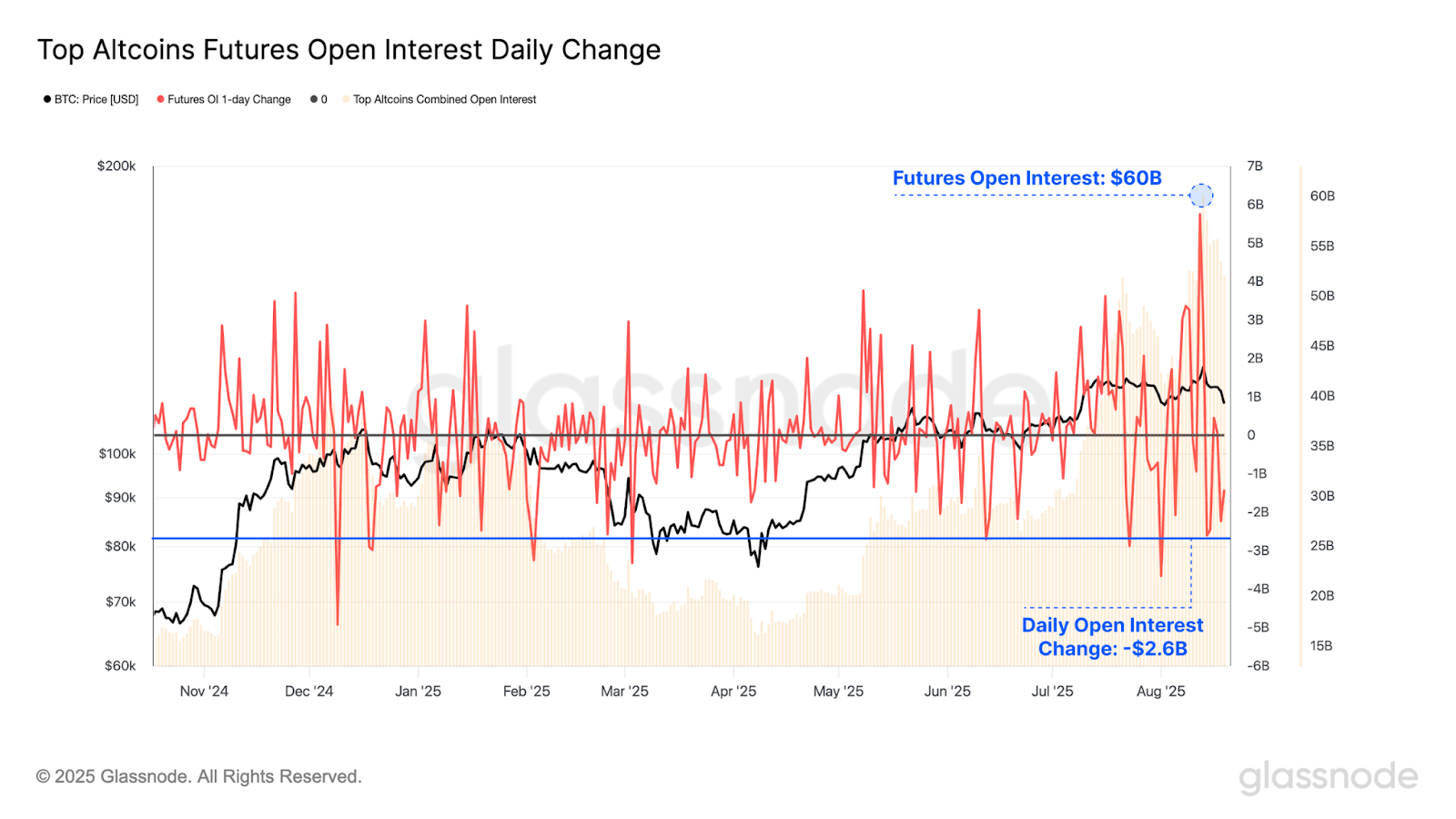
The dominance of Ethereum's derivative products has reached a critical level, with open interest rising to the fourth largest market share in history at 43.3% compared to Bitcoin's 56.7%.
More importantly, the trading volume of Ethereum's perpetual futures has reached an all-time high of 67%, marking the most significant structural shift towards altcoin speculation in market history.
Total liquidation volume across major altcoins peaked at $303 million per day, double the liquidation volume compared to the Bitcoin futures market.
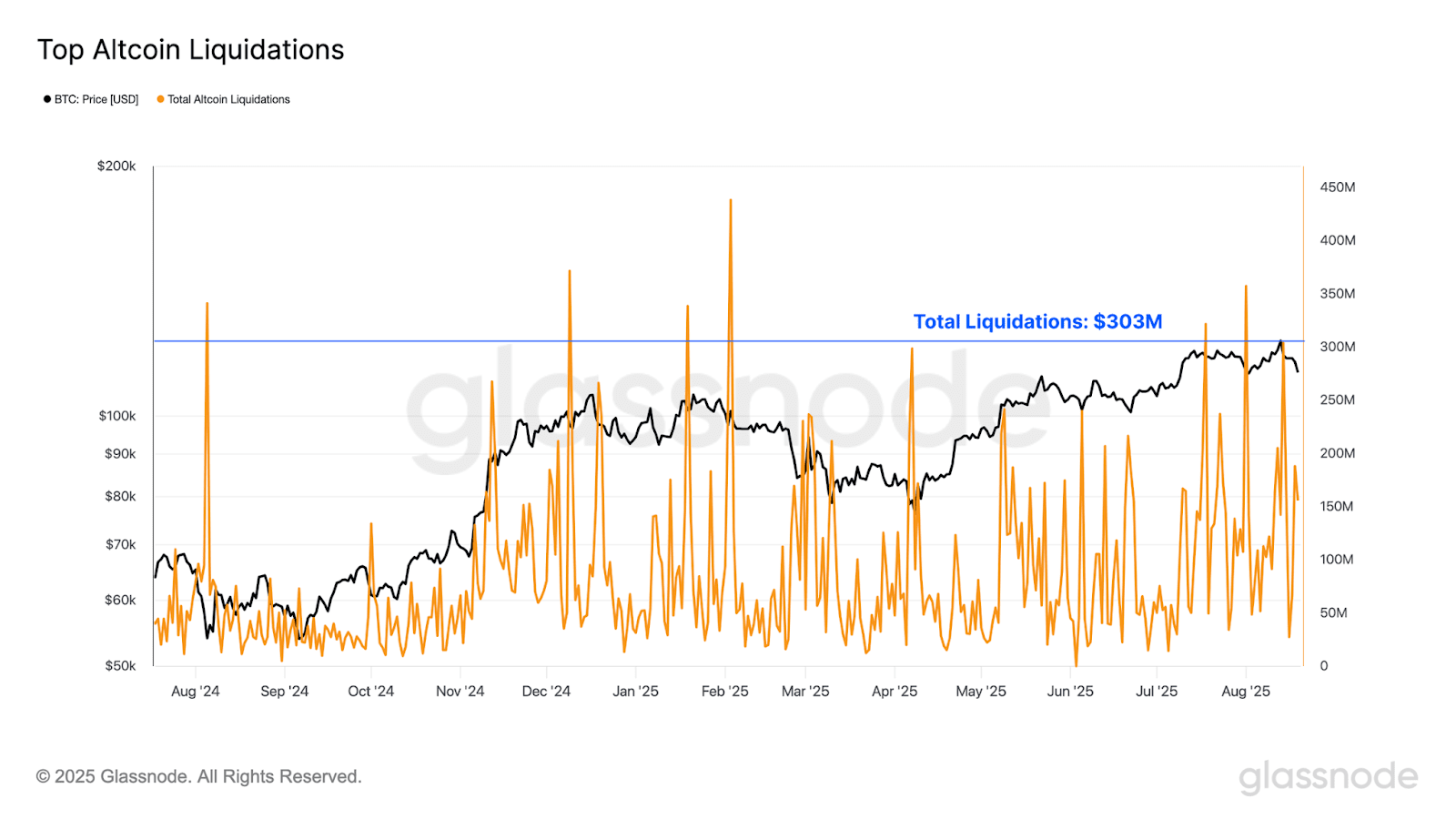
The liquidation events over the weekend, ranked as the 15th largest in history, were the result of increasing demand for leveraged exposure to alternative cryptocurrencies.
However, Glassnode notes that the recent contract closures appear to be voluntary rather than forced liquidations.
Short-sell liquidations totaled $74 million during the formation of the all-time high, while long liquidations reached $99 million during the subsequent downtrend.
Cycle Models Persist Despite Institutional Integration
Glassnode's analysis also reveals that the current cycle of Bitcoin has maintained supply above profitable levels for 273 days, becoming the second-longest recorded cycle, only behind the 335-day cycle of the 2015-2018 period.
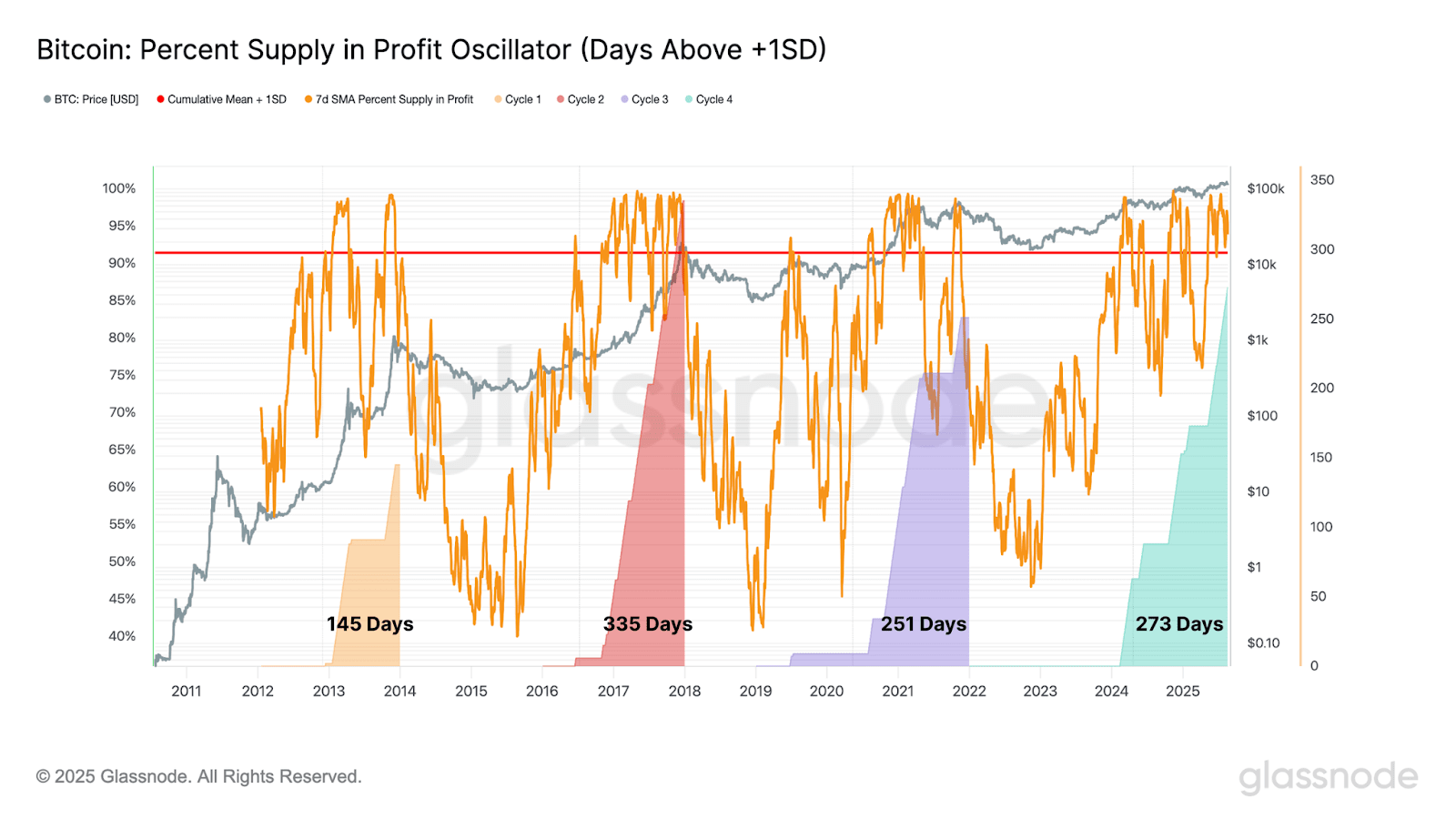
This index indicates a level of maturity in the cycle comparable to historical precedents rather than fundamental structural changes.
Long-term holders have realized accumulated profits exceeding all previous cycles except for 2016-2017, indicating selling pressure consistent with late-stage historical behavior.
This profit-taking activity aligns with traditional cycle dynamics, where long-term holders distribute to newer market participants during periods of euphoria.
Profit-taking volume has significantly decreased in the effort to achieve the recent all-time highs compared to previous breakouts at $70,000 and $100,000.
This particularly shows that the market is struggling to maintain its upward momentum despite reduced selling pressure from current holders.
The recent acceleration of losses also reached $112 million per day during the current correction, still within the typical range observed during local pullbacks throughout the bullish cycle.
The first Bitcoin whales have begun rotating between assets, with one holder transferring 400 BTC worth $45.5 million today to Ethereum on the Hyperliquid exchange before opening leveraged buy positions totaling 68,130 ETH across multiple wallets.
This behavior suggests profit optimization strategies rather than a rotation of underlying assets, supporting the argument that cycle models remain intact despite an expanding participant base and regulatory clarity.
Technical Outlook Points to Consolidation at Key Support Levels
Market analysts view Bitcoin's recent pullback as a strategic repositioning rather than a fundamental weakness, with NoOnes CEO Ray Youssef noting that "the Bitcoin pullback is less about fundamentals and more about market participants strategically repositioning due to current market conditions."
The correction occurred after excessive leverage was used following Bitcoin reaching a new high above $124,000, combined with a gradual decline in spot demand and significant unrealized profits among traders.
Unexpected U.S. inflation data caught market participants off guard, dampening expectations for quick rate cuts and forcing Bitcoin to reprice alongside other risky assets.
Youssef emphasized that "when excessive leverage encounters macro instability, a healthy price reset is often the path of least resistance for the market."
However, Bitcoin's maintenance above $100,000 for over three months is particularly notable.
Youssef noted that "while BTC dropped to a low of $112,600, buyers have strongly defended the support zone, protecting the bullish market structure from total collapse even as short-term traders unwind their positions."
The technical outlook depends on whether Bitcoin can hold the critical psychological support level between $100,000 and $110,000, with structural bids remaining intact above this level.
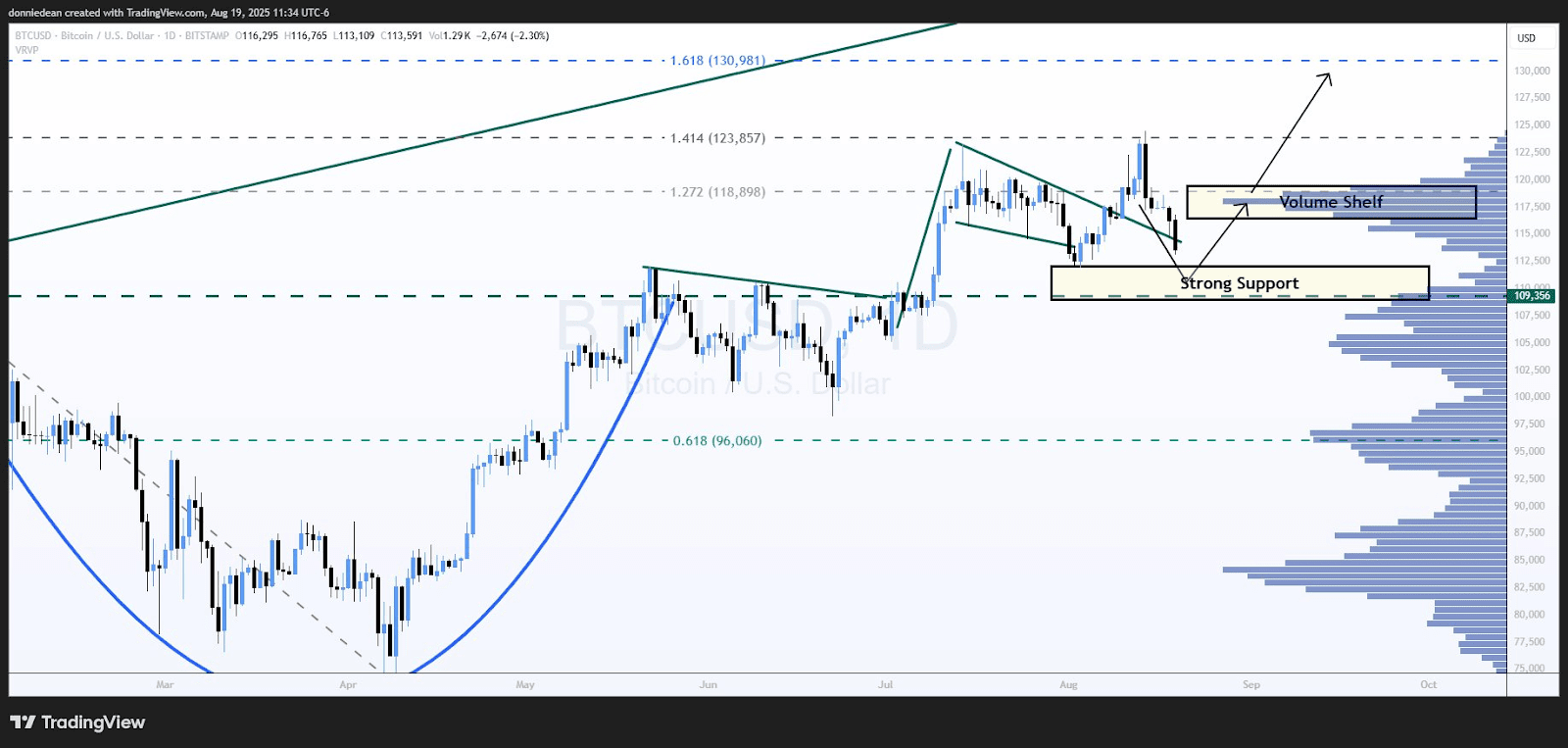
According to Youssef's analysis, "if the support level of $112,500 is held and the price recovers from there, Bitcoin is likely to consolidate in the coming period before continuing to rise to previous highs and possibly surpassing them."
A decisive break below $112,000 could trigger a deeper pullback to $110,000 and potentially $105,000 without new macro catalysts.
In contrast, a recovery in risk appetite and expectations of increased liquidity could "quickly reignite market momentum once again," with a high likelihood that Bitcoin will "return and surpass $124,000 in the next market rally" as institutional demand continues to outstrip supply.


